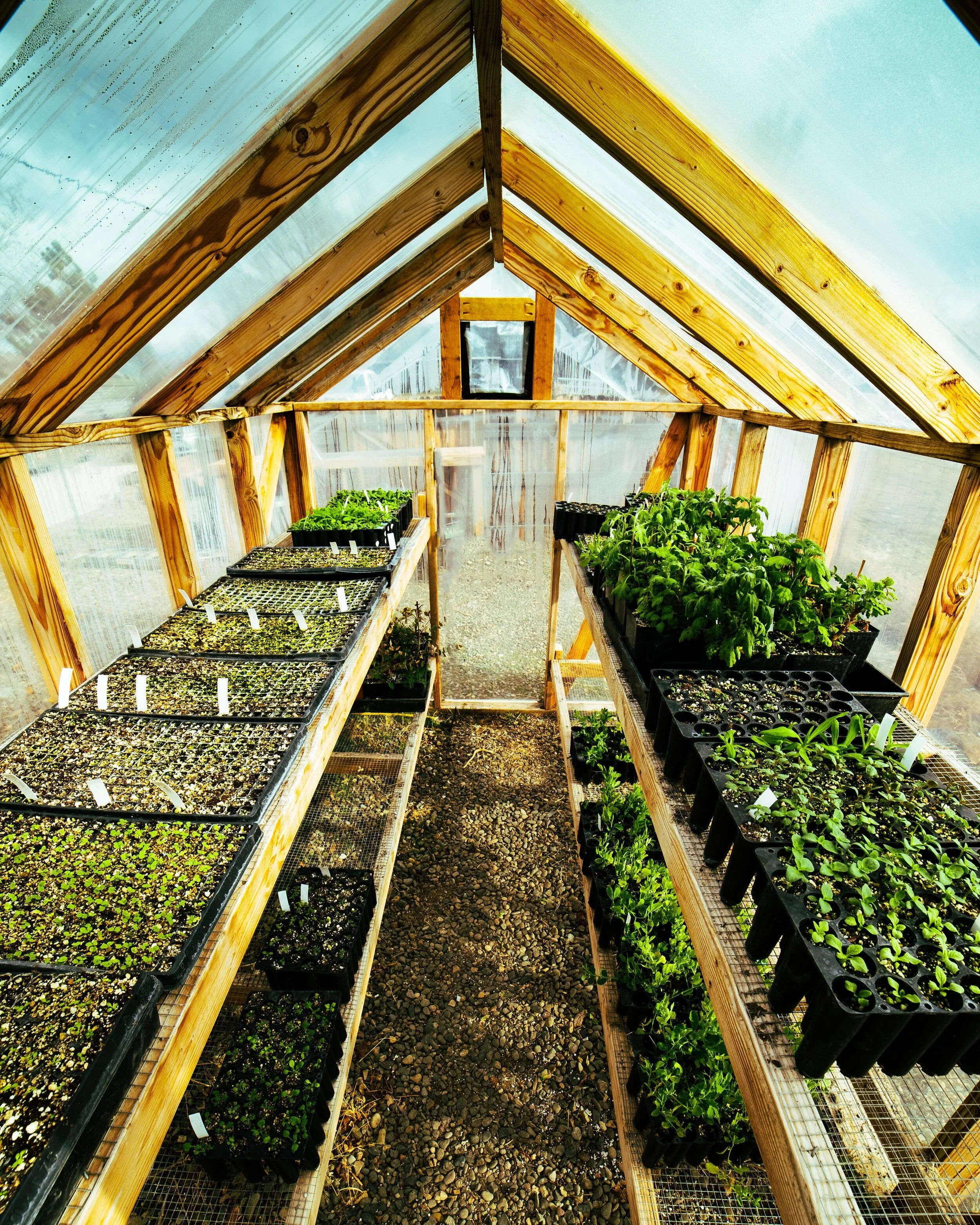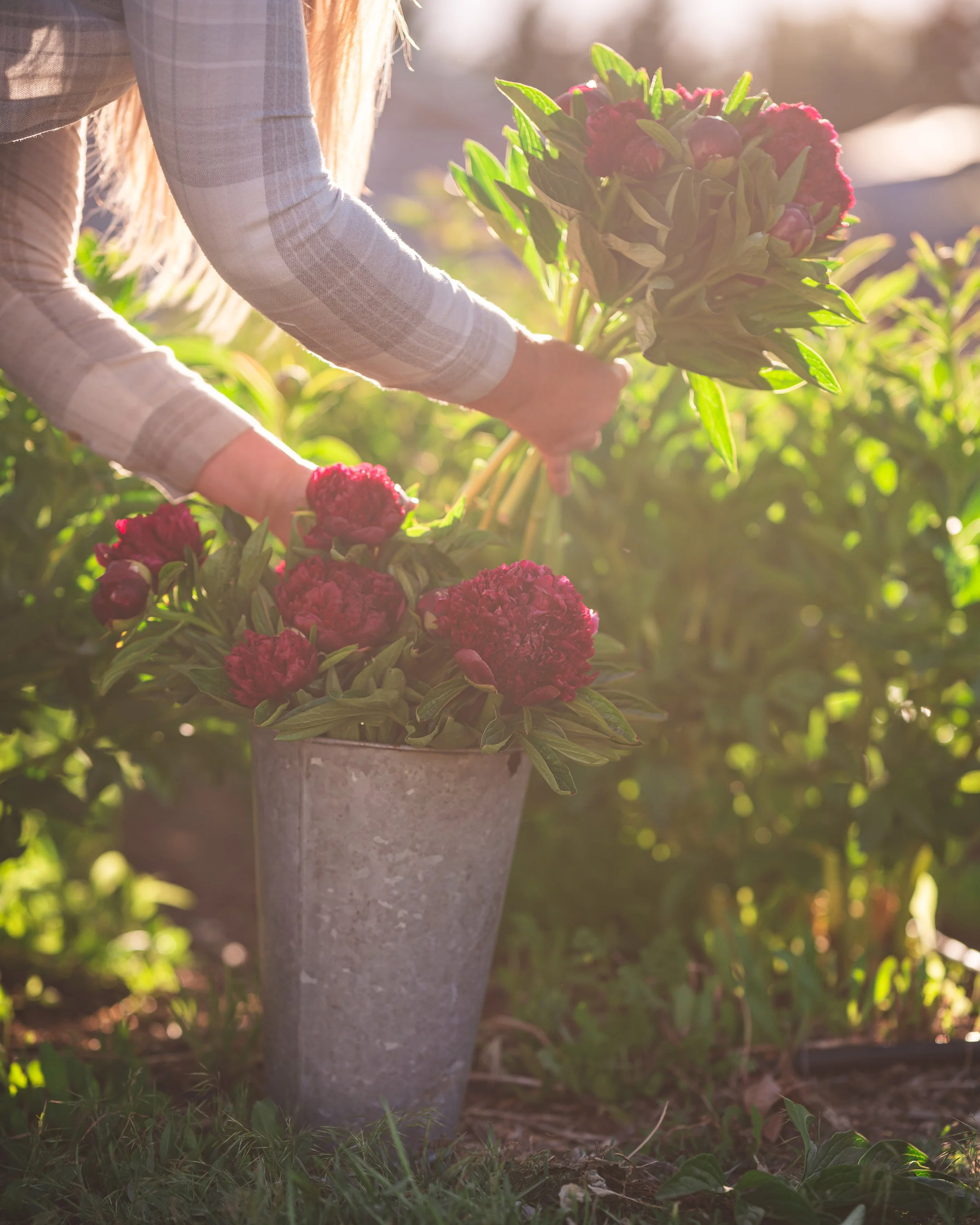How to Budget for Your First Year of Flower Farming
I remember the conversation that started it all:
Jessica: “Graham, I want to start a flower farm!”
Me: “Interesting… How much is this going to cost? Where will you grow the flowers? And where are you going to sell them?”
Jessica: “I don’t know, but I know it’s going to work!”
It wasn’t exactly a business proposal, but we were excited (and maybe a little naive). One year in, I found myself asking the same question repeatedly:
Me: “Is this a business or a hobby!?”
That first year, we didn’t have a real budget or plan. We ran the farm by the seat of our pants, making plenty of mistakes along the way. If we had started with a clear budget, we could have saved ourselves countless arguments—and a lot of money.
Creating a budget is one of the most important steps to starting your flower farming journey, even if it’s just an educated guess. In this blog, I’ll walk you through:
How to determine your "seed money" – The starting capital you can comfortably invest without stress.
Key expenses to include – From seeds and soil to general administrative costs, I’ll break down the major categories to plan for.
How to use your budget – As both a roadmap for your first year and a tool to determine if flower farming is the right financial step for you.
With these tips, you’ll have a strong foundation to make your first year of flower farming not just exciting but sustainable.
Castle Drive dahlias thriving near our DIY propagation house—an example of how thoughtful planning and budgeting help create beautiful, functional spaces for flower farming.
Seed Money: The Foundation of Your Budget
In your first year of flower farming, instead of trying to estimate sales, focus on determining your seed money—the starting capital you’re willing and able to invest. Think of this as your safety net, a number you can comfortably work with without risking financial stress.
Here’s how to approach it:
Determine Your Limits:
Sit down and look at your finances. What’s an amount you can invest without worrying about it affecting your day-to-day life? This might mean dipping into savings or allocating extra income.Set Expectations:
Consider this as money you’re willing to lose if things don’t go as planned. It’s not about expecting failure but rather being realistic about the challenges of starting a new business.Include Your Support System:
If you have a partner or family member involved in the decision-making, ensure you’re on the same page about how much to invest. It’s a lot easier to budget as a team than to navigate financial disagreements later.
Example:
In our first year, we allocated $2,000 of our own money to get started. Jessica’s mom added another $1,000 to help. It wasn’t a lot, but it worked for the 1,600 square feet we were growing on at the time.
Your seed money will guide the rest of your budget, helping you decide what’s feasible for your first year. It’s the foundation for building a financially sustainable flower farming business.
Setting goals is a cornerstone of flower farming success. Taking the time to map out your vision ensures each season starts with purpose and clarity.
Cost of Goods Sold (COGS): The Heart of Your Budget
Once you’ve figured out your seed money, it’s time to dive into how you’ll spend it—starting with Cost of Goods Sold (COGS). These are the expenses directly tied to producing your flowers, like seeds, tubers, soil amendments, and supplies for harvesting and arranging.
COGS is where most of your budget will go, and it’s crucial to get as accurate an estimate as possible. While you won’t get it perfect, having a solid starting point will help you avoid surprises.
Breaking Down COGS
Here’s how to approach this:
Start With Your Growing Space:
How much land are you working with? For example, in our first year, we grew on 1,600 square feet, equivalent to about seven of our current rows. Knowing your space helps you estimate how many plants you’ll need and, therefore, how much to budget for seeds, tubers, and bulbs.Plan for Soil and Amendments:
Healthy soil is critical for success. Estimate costs for compost, fertilizers, and any other amendments you’ll need to improve your soil. For us, compost costs about $40 per yard, and we typically use a few yards per growing season.Think Through Successions:
Will you grow multiple successions of crops to maximize your space? Each new succession means more seeds or plugs, so be sure to include these in your estimates.Factor in Design and Harvest Supplies:
This includes items like bouquet sleeves, floral tape, snips, and buckets for harvesting. These costs might seem small but can add up quickly.
Tips for Estimating Costs
Look at the growing space you have and plan how many plants you can fit.
Research prices for seeds, bulbs, and tubers for the varieties you plan to grow.
Don’t forget ongoing costs like additional fertilizer or supplies throughout the season.
Example:
If you have 1,600 square feet, averaging 8-inch spacing, you could grow around 2,300 plants. Using this number, you can estimate how much you’ll spend on seeds, soil amendments, and other essentials.
A Note on Accuracy
You won’t get 100% accuracy in your first year—that’s okay! The goal is to create a roadmap that helps you prioritize and avoid overspending. As you gain experience, you’ll refine these estimates for future seasons.
General and Administrative (G&A) Expenses: The Framework of Your Business
Now that we’ve tackled COGS, let’s dive into General and Administrative (G&A) expenses—the costs necessary to run your business but not directly tied to producing your flowers. These expenses are essential for keeping your flower farm operational and professional.
What Are G&A Expenses?
G&A expenses encompass all the behind-the-scenes costs that support your business operations. Unlike COGS, which are tied to your product (the flowers), G&A covers the infrastructure and tools that make running your business possible.
Examples include:
Licenses and Permits: Required to legally sell flowers in your area.
Marketing and Branding: Business cards, a website, social media ads, and signage to promote your farm.
Memberships: Joining professional organizations like the Association of Specialty Cut Flower Growers (ASCFG) or local grower co-ops for networking and resources.
Office Supplies and Software: Tools for organizing your business, like accounting software, planners, or even pens and paper.
Utilities: Water, electricity, and other services that support your farm operations but aren’t part of growing the flowers.
Estimating G&A Expenses
These costs can vary greatly depending on your approach and location. To start, research the requirements in your area and consider which tools or services are essential for your first year.
For example:
Licensing Fees: These might range from $50 to several hundred dollars depending on local regulations.
Website Hosting: A simple website platform like Squarespace or Shopify typically costs $15–$40 per month.
Marketing Materials: Budget for printed business cards or flyers, especially if you plan to attend in-person events.
A Flexible Approach
G&A expenses are often more discretionary than COGS, meaning you have room to adjust your spending as you learn what works best for your farm. For instance, you might decide to postpone paid advertising and instead focus on free marketing strategies like social media or local networking.
How We Handled It
In our first year, we kept things simple:
We paid for necessary licenses and permits to operate legally.
We set up a basic website to showcase our farm and communicate with customers.
We skipped extras like paid advertising, relying instead on word-of-mouth and free tools to get started.
Looking back, this approach allowed us to focus on essentials while staying within budget, giving us the foundation to grow and expand in later years.
The start of something beautiful—our DIY propagation house brimming with seedlings, a reminder that every successful season begins with careful preparation and planning.
Putting Your Flower Farm’s Budget Together
With your COGS and G&A expenses estimated, it’s time to assemble your first-year budget. Think of your budget as your financial roadmap, helping you navigate through your first season without getting lost in the weeds. Here’s how to pull it all together:
1. Start with Your Seed Money
This is the starting point for your budget. If you’ve already determined how much you can afford to invest (and potentially lose) in your first year, use that number as your baseline. This will help you stay grounded as you allocate funds to your estimated expenses.
2. Allocate to COGS and G&A
Divide your seed money between COGS and G&A expenses based on the estimates you’ve put together. Start with your most essential COGS—like seeds, soil amendments, and tools—and prioritize any G&A expenses necessary to launch your business, such as licenses or a basic website.
3. Flexibility is Key
Budgets are not static. Expect unexpected expenses to pop up and give yourself some wiggle room. If something unforeseen arises—like an extra load of compost or a marketing opportunity—adjust your allocations to accommodate it.
4. Use Your Budget as a Guide
Throughout the season, your budget will serve as a financial guide, helping you make informed decisions. For example:
If you’re considering splurging on a few unique flower varieties, check your budget first to ensure you can afford them.
Track your actual expenses against your budgeted amounts to identify areas where you’re overspending or underspending.
5. Learn and Adapt
Your first-year budget is as much about learning as it is about planning. Use it to gain insights into your spending habits and refine your approach for the next season. Keep notes on what worked, what didn’t, and what you might do differently in the future.
The Big Question: Hobby or Business?
One of the most valuable takeaways from budgeting is clarity: Can you afford to start a flower farm as a business? If the numbers show that your dream isn’t financially feasible right now, don’t give up. Instead:
Adjust your plans. Scale back your growing area or simplify your product offerings.
Save up. Take an extra year to prepare financially.
Seek creative solutions. For instance, consider partnerships, grants, or small loans to bridge the gap.
Harvesting Red Charm peonies—a milestone made possible by budgeting space and resources to invest in these stunning roots. Thoughtful planning pays off in blooms!
A Final Note
Your budget is not a crystal ball, nor does it have to be perfect to be effective. It’s a tool—a roadmap to guide you through your first season and help you manage your finances responsibly. Unexpected challenges will arise, and numbers may shift, but that’s all part of the journey.
Allow yourself the flexibility to adapt, give yourself grace when things don’t go as planned, and celebrate the wins—no matter how small. Remember, flower farming isn’t just about the numbers. It’s about cultivating something meaningful, building connections with your community, and watching your dreams grow—one season, one bloom, and one lesson at a time.
No matter where your flower farming journey takes you, budgeting will be one of the most valuable tools in your toolbox. You’ve got this!
Ready to Create Your First-Year Budget?
Take the guesswork out of budgeting with our free First-Year Flower Farm Budget Cheatsheet. This easy-to-use tool is designed to help you estimate your expenses and allocate your seed money effectively, so you can start your flower farming journey with confidence.
Looking Ahead to Year Two?
Already tackled your first-year budget? Our blog for Second-Year Flower Farmers and Beyond dives into advanced budgeting strategies to help you scale your flower farming business sustainably.
We are looking forward to sharing more blooms with you soon.
Graham & Jessica







